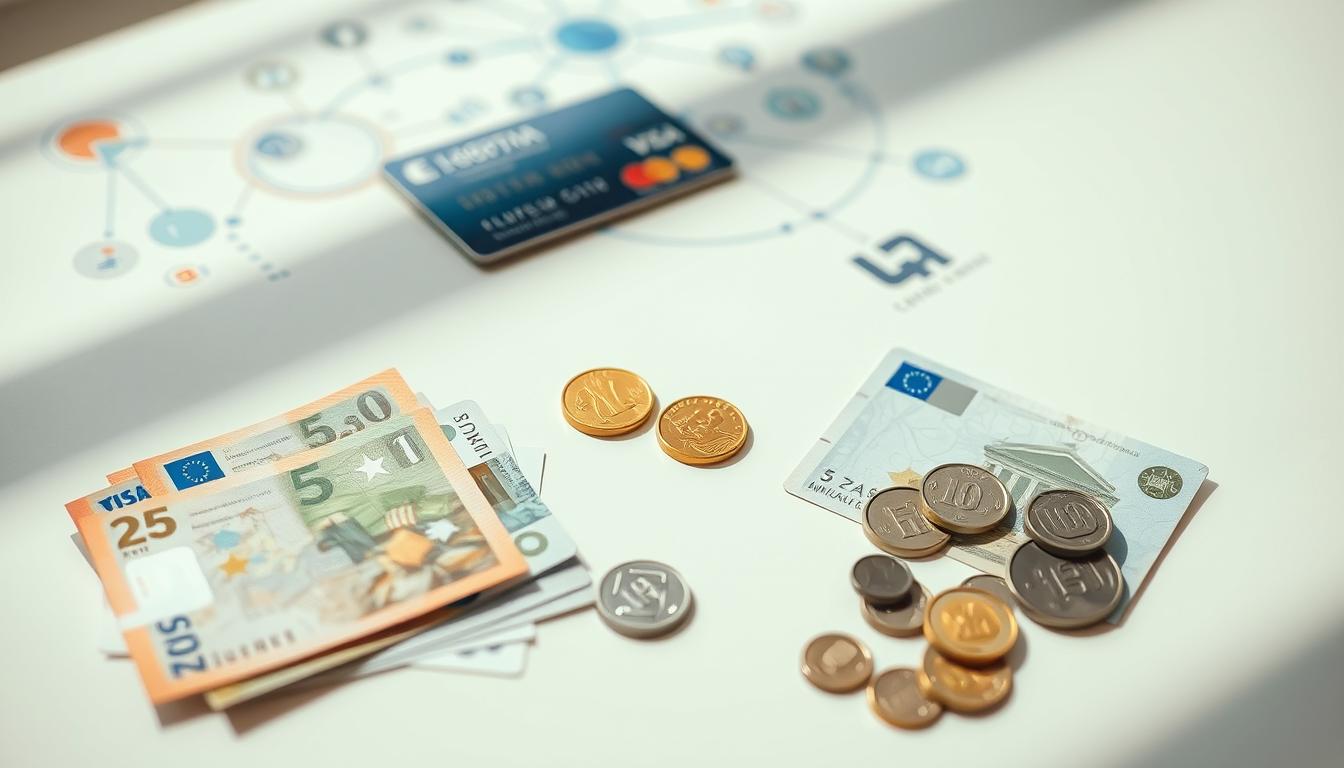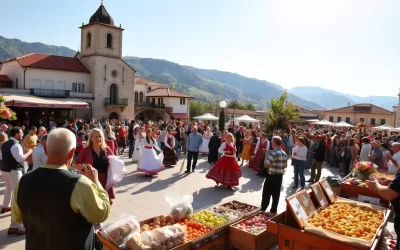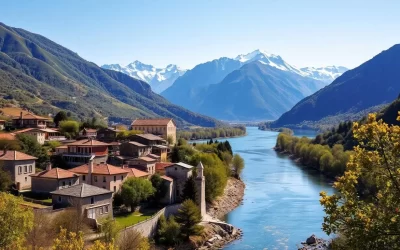Did you know that Montenegro uses the Euro, even though it’s not part of the Eurozone? This surprising fact makes it easier for travelers to handle money while exploring its stunning Adriatic coast and historic towns like Kotor and Budva.
Understanding the local currency is essential for a hassle-free trip. Whether you’re dining at a seaside restaurant or booking a guided tour, knowing how to manage your money can save you time and avoid unnecessary fees.
This guide will help you navigate cash and card payments, ensuring you’re prepared for every adventure. From budget-friendly tips to avoiding extra charges, we’ve got you covered. Let’s dive into the details so you can focus on enjoying your trip!
Understanding Montenegro’s Currency Landscape
Planning your trip? Knowing the local currency can make your journey smoother. The Euro (€) is the official currency here, even though the country isn’t part of the Eurozone. This makes it easy for travelers to handle transactions without worrying about exchange rates.
Euro as the Legal Tender
Throughout the country, the Euro is widely accepted. Whether you’re shopping in a bustling city or dining in a quiet village, you’ll find it’s the standard. This consistency ensures you won’t face surprises when paying for goods or services.
Coin and Banknote Breakdown
The Euro comes in both coins and banknotes. Coins include 1, 2, 5, 10, 20, and 50 cents, as well as €1 and €2. Banknotes range from €5 to €500, though smaller denominations are more commonly used for everyday purchases.
When exchanging money, it’s best to avoid the airport due to higher fees. Instead, opt for licensed exchange bureaus or banks in the city. These offer better rates and are a safer choice for your transactions.
Digital payments are also on the rise, with many businesses accepting cards. This growing trend adds convenience, especially for larger purchases. However, carrying some cash is still recommended, particularly for smaller shops or rural areas.
Choosing the Right Payment Method for Your Trip
Managing your finances wisely is key to a stress-free travel experience. Whether you’re dining at a local café or shopping in a bustling market, knowing your payment options can save you both time and money.
In most cities, cards are widely accepted. Restaurants, hotels, and retail stores often welcome Visa and Mastercard. This convenience makes cards a great choice for larger purchases or when you’re on the go.
However, cash is still essential, especially in rural areas. Smaller shops and local markets may not accept cards, so having some euros on hand ensures you’re prepared for any situation.
Here’s a quick comparison to help you decide when to use cash or cards:
| Payment Method | Benefits | Best For |
|---|---|---|
| Cash | Accepted everywhere, no transaction fees | Small purchases, rural areas |
| Cards | Convenient, secure, ideal for larger expenses | Urban areas, hotels, restaurants |
Timing is also important. Use cards for convenience in cities, but carry cash for smaller transactions or when visiting less touristy spots. This balance ensures you’re always ready, no matter where your adventures take you.
By planning ahead and mixing both payment methods, you’ll enjoy a smoother trip. This guide helps you make informed choices, ensuring you focus on creating unforgettable memories.
Montenegro: Ultimate Travelers Guide to Currencies & Payments
Exploring a new destination is exciting, but understanding the local payment system can make your trip even smoother. This guide helps you navigate currencies and payments, ensuring you’re ready for every adventure. Whether you’re booking accommodation or planning activities, knowing your options saves time and money.
Your choice of payment method can impact your travel experience. Cards are widely accepted in cities, making them ideal for hotels and restaurants. However, cash is essential for smaller shops or rural areas. Balancing both ensures you’re prepared wherever you go.
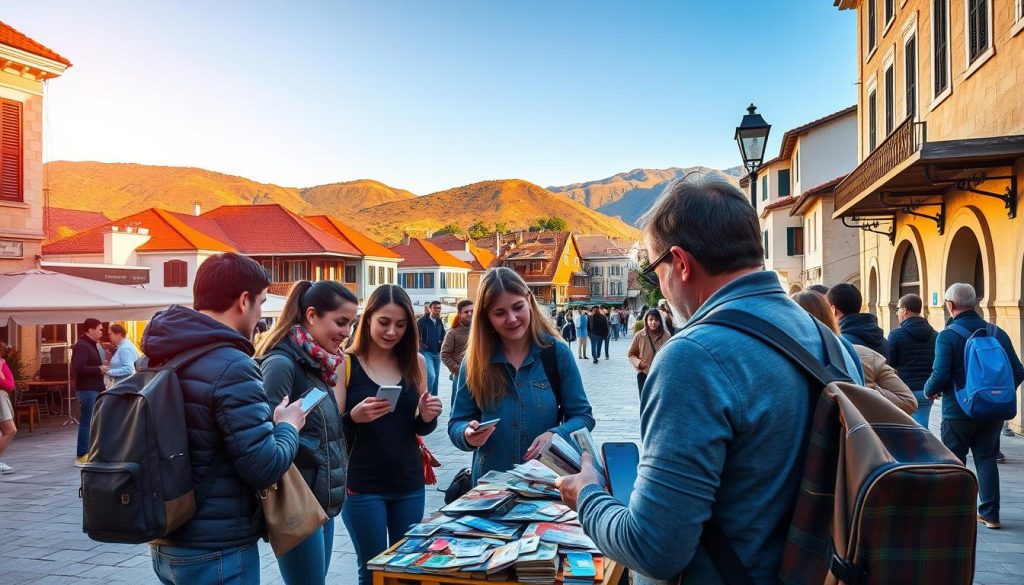
Planning your visit also involves choosing the right month. Peak seasons offer vibrant experiences but may come with higher costs. Off-peak travel can save money and provide a more relaxed atmosphere. Consider your budget and preferences when deciding.
Here’s a quick overview of how payment methods align with your travel needs:
| Payment Method | Best Use | Tips |
|---|---|---|
| Cash | Small purchases, rural areas | Carry smaller denominations for convenience |
| Cards | Hotels, restaurants, urban areas | Notify your bank of travel plans to avoid issues |
By combining these insights with your travel plans, you’ll enjoy a seamless experience. This guide ensures you’re well-prepared, letting you focus on creating unforgettable memories in your chosen destination.
Navigating Card Payments and ATM Withdrawals
Handling money while traveling doesn’t have to be complicated, especially when you know the right payment methods. Whether you’re exploring the world or relaxing on a stunning beach, understanding how to use cards and ATMs ensures a smooth experience.
Accepted Card Types and Networks
In most areas, especially along the coastline, Visa and Mastercard are widely accepted. These networks are reliable for dining, shopping, and booking activities. Some businesses also accept American Express, though it’s less common.
For smaller shops or rural spots, carrying cash is still a good idea. However, in cities and popular tourist areas, cards are convenient and secure. Always check for card logos at the entrance to confirm acceptance.
Finding ATMs and Avoiding Excessive Fees
ATMs are easy to find in urban centers and near popular beach destinations. They typically dispense Euros and accept Visa, Mastercard, Maestro, Plus, and Cirrus cards. Some ATMs may offer language options, including English, for ease of use.
Be mindful of fees, as foreign cardholders often face charges ranging from €4.88 to €5.99 per transaction. To save money, use ATMs affiliated with major banks and avoid those in high-traffic tourist spots.
| Card Type | Acceptance | Tips |
|---|---|---|
| Visa | Widely accepted | Ideal for urban areas and hotels |
| Mastercard | Widely accepted | Great for restaurants and shopping |
| American Express | Limited acceptance | Check before use in smaller shops |
By planning ahead and choosing the right payment methods, you can enjoy your trip without worrying about finances. This guide ensures you’re prepared, whether you’re strolling along the coastline or exploring the vibrant cities.
Avoiding Hidden Fees and Exchange Pitfalls
Saving money while traveling starts with smart currency choices. Knowing where and how to exchange money can make a big difference in your budget. By avoiding common pitfalls, you can keep more cash in your pocket for memorable experiences.
Benefits of Using Local Currency
Using the local currency, the Euro, ensures you avoid unnecessary fees. Many businesses in the country prefer cash, especially in smaller shops or rural areas. This approach also helps you steer clear of dynamic currency conversion (DCC) fees, which can add up quickly.
Exchanging money at reputable local banks or licensed bureaus often offers the best rates. These places are more reliable than airport or hotel exchanges, which are known for hidden fees and unfavorable rates.
Steering Clear of Airport and Hotel Exchanges
Airport and hotel exchanges are convenient but costly. They often charge higher fees and offer poor rates, leaving you with less money for your trip. Instead, plan ahead and exchange money at trusted locations in the city or popular tourist spots.
Here are some tips to avoid overpaying:
- Compare rates at multiple exchange bureaus before committing.
- Avoid using credit cards for cash withdrawals to dodge high transaction fees.
- Carry smaller denominations of cash for everyday purchases.
By following these strategies, you can save money and focus on enjoying your adventures. Smart planning ensures you’re prepared for every transaction, whether in bustling cities or quiet villages.
Managing Cash Versus Card Transactions
Finding the right balance between cash and card payments can make your trip smoother. Whether you’re exploring bustling cities or quiet waterfront markets, knowing when to use each method ensures you’re always prepared.
Carrying cash is essential for small purchases and rural areas. In local markets or small towns, cash is often the preferred payment method. It’s also useful for tipping or buying snacks at a water-front café.
On the other hand, cards are ideal for larger expenses and urban areas. Hotels, restaurants, and shops in major cities usually accept Visa and Mastercard. This convenience makes cards a great choice for travelers on the go.
Here’s a quick comparison to help you decide:
| Payment Method | Benefits | Best For |
|---|---|---|
| Cash | Accepted everywhere, no transaction fees | Small purchases, rural areas |
| Cards | Convenient, secure, ideal for larger expenses | Urban areas, hotels, restaurants |
When using ATMs, efficiency is key. Look for machines affiliated with major banks to avoid high fees. In tourist-heavy areas, ATMs may charge more, so plan your withdrawals accordingly.
For example, in waterfront markets, cash is often the go-to option. Meanwhile, in urban centers, cards are widely accepted. This variety in payment preferences means you’ll need to adapt based on your location.
By carrying a mix of cash and cards, you’ll be ready for any situation. This approach ensures you can enjoy your travels without worrying about payment hassles.
Essential Tips for Currency Exchange in Montenegro
Getting the best exchange rates can save you money and enhance your travel experience. To make the most of your trip, it’s important to know where and how to exchange currency safely and efficiently.
Using Licensed Exchange Bureaus and Banks
Licensed exchange bureaus and major banks like Erste Bank are your best options for currency conversion. They offer better rates and greater transparency compared to informal exchange points. This ensures you get the most value for your money.
You’ll find these trusted providers in major towns and near popular hotels. They are reliable and often have lower fees, making them a smart choice for travelers. Always look for official signage and customer reviews to confirm their legitimacy.
Here’s a quick comparison of exchange options:
| Exchange Option | Benefits | Best For |
|---|---|---|
| Licensed Bureaus | Better rates, transparent fees | Major towns and cities |
| Major Banks | Reliable, secure transactions | Urban areas and hotels |
| Airport Exchanges | Convenient but costly | Emergency use only |
When exchanging money, avoid airport and hotel services. They often charge higher fees and offer unfavorable rates. Instead, plan ahead and visit licensed bureaus or banks in the town center.
By choosing trusted providers, you’ll save money and enjoy a smoother travel experience. This approach ensures you’re prepared for every transaction, whether you’re shopping in a bustling town or relaxing at your hotel.
How and Where to Withdraw Cash in Montenegro
Accessing cash while traveling can be straightforward if you know where to look. ATMs are widely available in cities, tourist hotspots, and even near mountain regions, making it easy to get Euros when you need them.
To make the most of your experience, start by identifying reliable ATMs. Major banks and licensed providers in urban areas offer secure transactions with lower fees. Avoid airport ATMs, as they often charge higher rates.
In mountain resort areas, ATMs are less frequent but still accessible. Plan ahead and withdraw enough cash before heading to remote spots. This ensures you’re prepared for small purchases or emergencies.
Here’s a quick guide to efficient cash withdrawals:
- Use ATMs affiliated with major banks for lower fees.
- Withdraw larger amounts to minimize transaction costs.
- Carry smaller denominations for convenience in rural areas.
Regional differences in withdrawal procedures can affect your experience. In cities, ATMs are plentiful and often offer English language options. In contrast, rural areas may have fewer machines, so plan accordingly.
To avoid excessive fees, notify your bank of your travel plans. This prevents transaction blocks and ensures smooth access to your funds. Additionally, compare withdrawal fees across different ATMs to find the best rates.
“Withdrawing cash efficiently is all about planning ahead and choosing the right locations.”
By following these tips, you’ll enjoy a hassle-free experience and focus on exploring the stunning landscapes and vibrant cities. Whether you’re in a bustling town or a quiet mountain village, you’ll always have access to the cash you need.
Safety and Security Tips for Handling Money
Ensuring your money stays safe while traveling is a top priority for any trip. Whether you’re exploring bustling cities or quiet villages, taking a few precautions can make all the difference. Here’s how to protect your cash and cards, so you can focus on enjoying your summer adventures.

Protecting Your Cash on the Go
Carrying cash is essential, but it’s important to do so wisely. Use a hotel safe to store extra money and valuables when you’re out exploring. This simple step can prevent loss or theft during your flight or throughout the year.
For daily expenses, carry only what you need. A money belt or hidden pouch can keep your cash secure while you’re on the move. Avoid flashing large sums in public, especially in crowded areas.
Smart Practices for ATM Withdrawals
ATMs are convenient, but they require caution. Use machines located in well-lit, busy areas, such as banks or shopping centers. Avoid isolated ATMs, especially during the busy summer season, when theft risks are higher.
Always cover the keypad when entering your PIN, and be aware of your surroundings. If something feels off, trust your instincts and find another machine. Notify your bank of your travel plans to avoid transaction blocks during your trip.
“A little caution goes a long way in keeping your money safe while traveling.”
Here’s a quick guide to handling money securely:
| Safety Tip | Why It Matters |
|---|---|
| Use hotel safes | Protects valuables from theft |
| Carry minimal cash | Reduces loss in case of theft |
| Choose busy ATMs | Lowers risk of scams or theft |
By following these tips, you’ll feel more confident about handling money abroad. Whether you’re on a flight or exploring a new destination, these practices ensure your finances stay secure throughout the year.
Payment Practices in Urban and Rural Areas
Understanding local payment habits can make your trip smoother and more enjoyable. Whether you’re exploring bustling cities or quiet countryside villages, knowing when to use cash or cards ensures you’re always prepared.
City Payment Preferences
In urban areas, modern payment systems are widely adopted. Major cities like Podgorica and Kotor are hubs for card payments, with Visa and Mastercard accepted at most hotels, restaurants, and shops. This convenience makes cards a preferred choice for travelers.
For larger expenses, such as booking accommodations or dining at upscale restaurants, cards are ideal. They’re secure, quick, and often come with added benefits like travel insurance. However, it’s still wise to carry some cash for smaller purchases or unexpected situations.
Rural Cash Necessities
In contrast, rural areas often rely on cash transactions. Smaller shops, local markets, and family-run businesses in the countryside may not accept cards. This makes cash essential for everyday purchases like groceries or souvenirs.
If you’re planning to visit remote villages or scenic spots, withdraw enough cash beforehand. ATMs are less frequent in these areas, and some may charge higher fees. Carrying smaller denominations is also helpful for convenience.
Here’s a quick comparison to help you decide:
| Location | Preferred Payment Method | Tips |
|---|---|---|
| Urban Areas | Cards (Visa, Mastercard) | Notify your bank of travel plans |
| Rural Areas | Cash | Withdraw money in advance |
Timing your visit can also impact your payment experience. The best time visit for seamless transactions is during the off-peak season when crowds are smaller, and services are more accessible. This ensures you can focus on enjoying your trip without worrying about payment hassles.
By balancing cash and card usage based on your location, you’ll navigate the currency montenegro system with ease. Whether you’re in a bustling city or a quiet village, these tips ensure you’re always ready to make the most of your adventures.
The Rise of Digital and Contactless Payments
The way we pay is evolving, and digital options are leading the charge. Across the globe, contactless and digital payments are becoming the norm, offering speed, convenience, and security. Whether you’re dining out, shopping, or even renting a car, these modern methods are transforming the payment landscape.
Technological advances have made it easier than ever to go cashless. Mobile wallets like Apple Pay and Google Pay allow you to make transactions with just a tap. These tools not only save time but also reduce the need for physical cards or cash. For travelers, this means fewer worries about carrying large amounts of money or dealing with unfavorable exchange rates.
The best time to embrace these innovations is now. Businesses, from small cafes to large retailers, are increasingly adopting contactless systems. This shift is driven by consumer demand for faster, fee-less transactions. For example, when renting a car, digital payments can streamline the process, eliminating the need for lengthy paperwork or cash deposits.
Here’s how digital payments compare to traditional methods:
- Speed: Transactions are completed in seconds, not minutes.
- Security: Encrypted systems reduce the risk of fraud.
- Convenience: No need to carry cash or multiple cards.
Everyday scenarios, like grabbing coffee or paying for parking, are now more efficient with contactless options. Even in rural areas, the adoption of digital payments is growing, making it easier for travelers to navigate transactions.
As the world moves toward a cashless future, embracing these solutions ensures you stay ahead. Whether you’re exploring a bustling city or a quiet countryside, digital and contactless payments offer a seamless way to manage your finances. The best time to start is today—join the movement and enjoy the benefits of modern payment methods.
Planning Your Budget and Managing Transaction Fees
Smart budgeting can make your trip more enjoyable and stress-free. By planning ahead, you can avoid unexpected costs and focus on creating unforgettable memories. Whether you’re exploring cities or relaxing in the countryside, managing your finances effectively ensures a seamless experience.

Estimating ATM Withdrawal Costs
ATM fees can add up quickly if you’re not careful. To save money, use ATMs affiliated with major banks, as they often charge lower fees. Online tools and apps can help you estimate withdrawal costs before your trip. This way, you’ll know exactly how much to budget for cash needs.
For example, in tourist-heavy areas, ATMs may charge higher fees. Planning your withdrawals in advance can help you avoid these extra costs. Always notify your bank of your travel plans to prevent transaction blocks.
Budgeting for Tipping and Small Purchases
Tipping and small purchases are everyday expenses that can impact your budget. Carrying cash is essential for these transactions, especially in rural areas where cards may not be accepted. A good rule of thumb is to set aside a daily allowance for these costs.
When dining out or taking a train, tipping is often expected. Budgeting for these expenses ensures you’re prepared without overspending. Smaller denominations of cash are also helpful for convenience.
Here’s a quick guide to managing your budget effectively:
| Expense | Budgeting Tip |
|---|---|
| ATM Withdrawals | Use bank-affiliated ATMs to save on fees |
| Tipping | Set aside a daily allowance for gratuities |
| Small Purchases | Carry cash for convenience in rural areas |
Checking the exchange rate frequently can also help you avoid overspending. Currency fluctuations can impact your budget, so staying informed ensures you get the best value for your money. For example, when planning your time visit montenegro, knowing the current exchange rate can help you make smarter financial decisions.
By following these tips, you’ll enjoy a stress-free trip and focus on the experiences that matter most. Whether you’re exploring bustling cities or scenic countryside, smart budgeting ensures you’re always prepared.
Integrating Wise Travel Money Solutions
Traveling with a smart money solution can simplify your financial management abroad. The Wise travel money card is a standout option for managing your trip montenegro expenses efficiently. It offers excellent rates and reduced fees, making it an ideal choice for travelers.
Benefits of the Wise Debit Card
The Wise debit card is designed to save you money and time. It allows you to hold up to 50 different currencies, usable in 175 countries worldwide. This flexibility ensures you’re always prepared, whether you’re dining in a bustling city or shopping in a quiet village.
One of the key advantages is its low conversion fees. Traditional banks often charge fluctuating rates, but Wise uses the mid-market exchange rate, which is often better. This means you get more value for your money with every transaction.
Additionally, Wise offers two free monthly withdrawals under $350. This feature is particularly useful for travelers who need cash for small purchases or tipping. The money typically appears in your account within 24 hours, ensuring you’re never left stranded.
Securing the Best Exchange Rates
Wise makes it easy to secure competitive exchange rates. You can top up your card in your local currency, and Wise handles the conversion at favorable rates. This eliminates the need for costly airport or hotel exchanges, which often come with hidden fees.
For example, if you’re planning your trip montenegro, you can review weekly exchange rates over a three-month period. This helps you identify the best times to load additional funds, maximizing your savings.
Here’s a quick comparison of Wise versus traditional methods:
| Feature | Wise | Traditional Banks |
|---|---|---|
| Conversion Fees | Low, mid-market rates | High, fluctuating rates |
| Withdrawal Fees | Two free monthly withdrawals | High fees per transaction |
| Currency Options | Up to 50 currencies | Limited options |
By choosing Wise, you’re not just managing your money—you’re optimizing it. This approach aligns with broader travel trends, where digital solutions are becoming the norm. Whether you’re exploring urban centers or rural areas, Wise ensures you’re always ready for your next adventure.
Exploring Montenegro’s Economic and Travel Landscape
Understanding how the official currency shapes your travel experience can make your journey more enjoyable. The Euro, as the local currency, plays a significant role in both economic activities and daily transactions. Whether you’re traveling along a scenic road or exploring bustling tourist spots, knowing how to manage your money ensures a smoother trip.
Currency Considerations in Tourist Areas
In popular destinations like Budva and Kotor, the Euro is widely accepted, making it easy for travelers to navigate payments. However, prices in these areas can be higher compared to rural spots. For example, dining in a coastal restaurant may cost more than in a mountain village. This difference highlights the importance of budgeting wisely when you visit montenegro.
On well-traveled roads, you’ll find a mix of cash and card payment options. Urban centers and tourist hubs often accept cards, while rural areas may prefer cash. Carrying both ensures you’re prepared for any situation. For instance, smaller shops along the road to national parks might not have card facilities.
Here are some tips to adjust your spending habits:
- Use cards for larger expenses in cities to avoid carrying too much cash.
- Carry smaller denominations of Euros for rural areas and small purchases.
- Compare prices between tourist-heavy spots and lesser-known destinations to save money.
By understanding how the official currency influences prices and payment practices, you can make smarter financial decisions. Whether you’re exploring a busy city or a quiet road, these insights ensure you’re always ready for your next adventure.
Seasonal Variations and the Best Times to Visit
Timing your visit can make a big difference in your travel experience. Seasonal changes affect everything from weather to costs, helping you plan a trip that suits your preferences and budget. Whether you’re exploring coastal towns or mountain trails, knowing the best times to visit ensures a smoother journey.
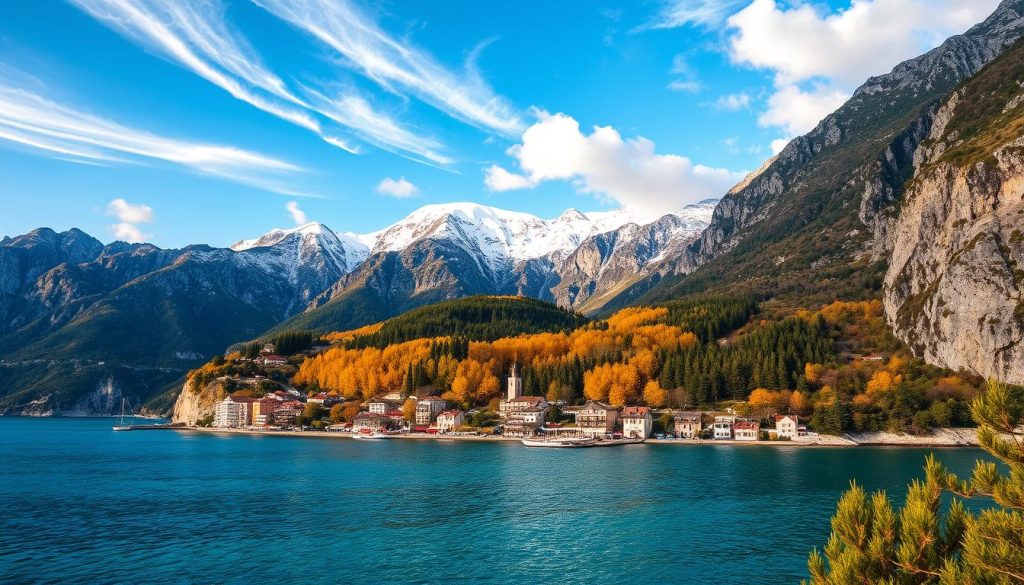
Spring (April to June) is ideal for mild weather and fewer crowds. This shoulder season offers comfortable temperatures, perfect for outdoor activities. You’ll also find better deals on accommodations and fewer lines at popular attractions. Using the euro for payments is straightforward, with most businesses accepting cards and cash.
Summer (July to September) is the peak season, attracting tourists with warm weather and vibrant festivals. However, prices for hotels and activities are higher, and popular spots can get crowded. For a more relaxed experience, consider visiting in early June or late September. These months still offer great weather but with fewer visitors.
Autumn (October to November) brings cooler temperatures and stunning fall foliage. It’s a budget-friendly time to visit, with lower accommodation costs and fewer tourists. Coastal areas remain accessible, while mountain regions start preparing for winter sports. This is also a great time to enjoy local festivals celebrating the harvest season.
Winter (December to March) transforms the mountains into a haven for skiing and snowboarding. Coastal areas are quieter, offering a peaceful retreat. While some businesses may close for the season, you’ll find unique experiences like cozy winter markets. Carrying cash in smaller denominations is helpful, as some rural spots may not accept cards.
Here’s a quick comparison of the seasons:
| Season | Weather | Best For |
|---|---|---|
| Spring | Mild, 60-75°F | Outdoor activities, budget travel |
| Summer | Hot, 77-95°F | Beaches, festivals |
| Autumn | Cool, 50-70°F | Budget-friendly travel, fall scenery |
| Winter | Cold, 30-50°F | Skiing, winter markets |
Safety and security considerations also vary with the season. During peak summer months, crowded areas may require extra vigilance with your belongings. In winter, mountain roads can be icy, so plan your travel routes carefully. Regardless of the season, staying informed and prepared ensures a smooth trip.
“Choosing the right time to visit can enhance your experience and save you money.”
By understanding seasonal variations, you can plan your time visit to align with your interests and budget. Whether you’re drawn to summer festivals or winter sports, these insights help you make the most of your journey.
Conclusion
Your journey begins with smart financial planning, ensuring every moment is stress-free. Understanding the local currency and payment methods is key to a smooth experience. Whether you’re exploring bustling cities or quiet villages, balancing cash and card usage ensures you’re always prepared.
Plan your currency strategy in advance to avoid hidden fees and maximize your budget. Use cards for convenience in urban areas, but carry cash for smaller purchases or rural spots. This approach keeps your finances secure while you focus on your adventure.
Remember, financial safety is just as important as the thrill of discovery. Keep your money secure at home and abroad by using trusted ATMs and notifying your bank of travel plans. With these tips, you’re ready to embrace every moment of your trip.
Refer back to this guide whenever you need a quick refresher. Now, pack your bags, plan your budget, and get ready for an unforgettable adventure!
The above is subject to change.
Check back often to TRAVEL.COM for the latest travel tips and deals.
Here are some Tours & Sightseeing suggestions that might pique your interests!
